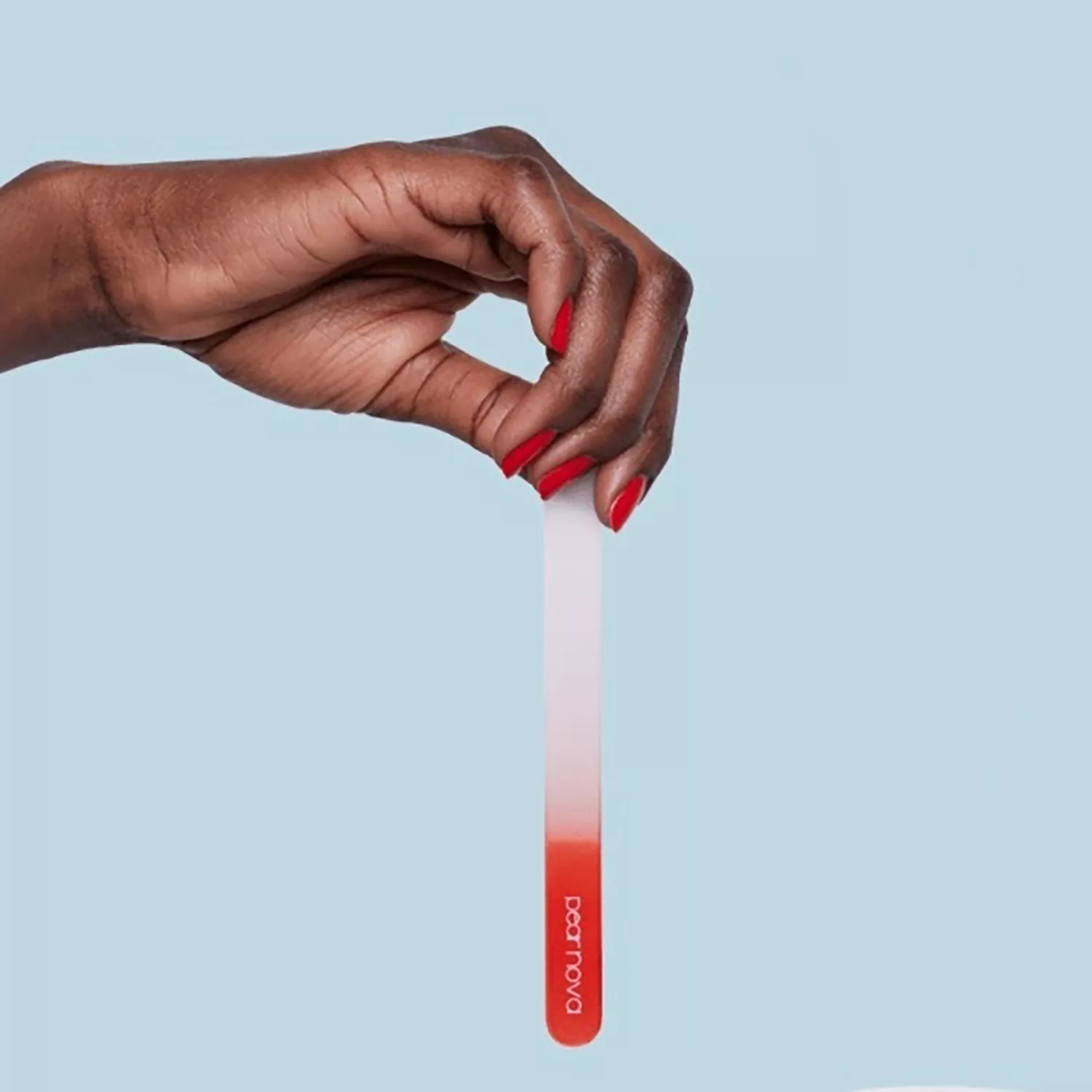
@pearnova
In This Article
What It Is
Which to Use
Does Shape Matter?
Should I Spend More?
Doing your nails at home seems easy enough—until you’re shopping for supplies and encounter a 6-foot wall of products. When there are 100 different nail files on display, it’s tough to know where to start.
And it isnt like you can just pick up any old nail file. Some work best for artificial nails, some help remove lingering gel polish, and others are made specifically for weaker, natural nails. Because using the wrong tool can cause serious damage, its important to understand which file does what.
To get the 411 on all things nail files, we asked the pros—celebrity nail artist Sonya Meesh, Nailing Hollywood nail artists San Sun Kim, Rachel Joseph, and Laura Malarkey, and LeChat Nails educator Syreeta Aaron—to outline the differences between all the options out there. Read on to find out what each nail grit is best for and which tools you’ll need to get the job done.
What Is Nail File Grit?
Nail file grit refers to how coarse and abrasive a nail file is. You’ll see files labeled by number, typically between 60 and 1000. (If you see two numbers, you’re likely looking at a double-sided file.) “The lower the number, the more abrasive the file is,” says Sonya Meesh, a celebrity nail artist with Forward Artists. You may also see them labeled as simply “coarse,” “medium,” or “fine.”
Why does it matter? An 80-grit nail file (more abrasive) can tear apart and damage natural nails. A fine, 1000-grit file would take serious elbow grease (or, more likely, it would break) when tasked with shaping acrylics. In other words: You need the right tool for the job at hand.
What Nail Grit Do I Need?
Shaping Artificial Nails
If you’re shaping acrylics, press-ons, or gel extensions down to the desired length, a lower grit (something between 80-180, says Meesh) will help you grind through the layers of cured glue or other artificial material. Meesh recommends Orlys Buffer File Duo ($18) for this kind of work, which has two sides—110 and 180 grit—and tapered ends that can help even out the sides and cuticles of the artificial nails. “Anything below 180 works for nail enhancements,” says Meesh.
Removing a Dip or Gel Manicure
Once you hit 180, you’re in the sweet spot for a grit that can help to remove the top layers of a dip or gel manicure. Once you get that initial cured layer off, you can soak the rest with acetone. “180 grit is coarse enough to break down the gel or dip product but not coarse enough to accidentally file too much product and damage the natural nail underneath,” says nail artist San Sung Kim. Once you get a bit closer to the natural nail, switch to a slightly higher (finer) grit to help finish the job.
Filing Natural Nails
If youre filing your natural nails, you’ll want to aim for files in the 200-240 grit range or a file labeled as a “medium grit,” says nail artist Laura Malarkey. “When filing the edges of natural nails its best to file from the outside edge into the midline in one sweeping movement on either side,” she says. “Filing this way protects the fragile edge of the natural nail from splitting and helps keep it from snagging as it grows out.”
Buffing and Detailing
When buffing the nail plate, you want the highest grit you can find so as not to split or damage the nail. “Never use a coarse grit to buff the bare nail plate or file the edges of a thin natural nail,” says Malarkey. “It will do irreparable damage.” The fine-grit nail files usually start at around 400. If your nails are naturally very weak, err on the higher (finer) side.
Does the Shape of the Nail File Matter?
In terms of the ability to help you create your look, nope. The shapes—rounded, half-moon, block—are really about what you’re most comfortable using. “It depends on the person,” says nail artist Syreeta Aaron, noting that some shapes might be easier to maneuver around the cuticles. Buy a few cheaper files and experiment with what shapes work best for you and your desired look.
Is it Worth it to Spend More on a Good Nail File?
As with many things in beauty (and in life), “you get what you pay for,” says nail artist Rachel Joseph. “Really cheap nail files do work, but the quality isnt the best.” That quality makes all the difference if you’ve set up shop at home. “If you file your nails frequently, it is definitely better to invest in a high-quality, reusable nail file,” says Malarkey, who recommends Ericas ATA Diamond Hand Files ($30). “My favorite for filing natural nails are diamond or glass files that can be cleaned and reused many times.”
“I have noticed that the quality of the file affects how quickly and precisely I can achieve my end goal,” Kim adds. “I also disinfect the file after every use and replace it every few months.” You’ll need to replace cheaper files more often as the grit wears down faster, so if you’re conscious of creating waste, those one-off files might not be for you.
And if the file isn’t working as well, that’s an indicator that it’s time to replace it. The file won’t shape as quickly or as well over time. “Another good sign of overuse is when you have bent the file or if the file is not as stiff as it once was,” says Aaron.